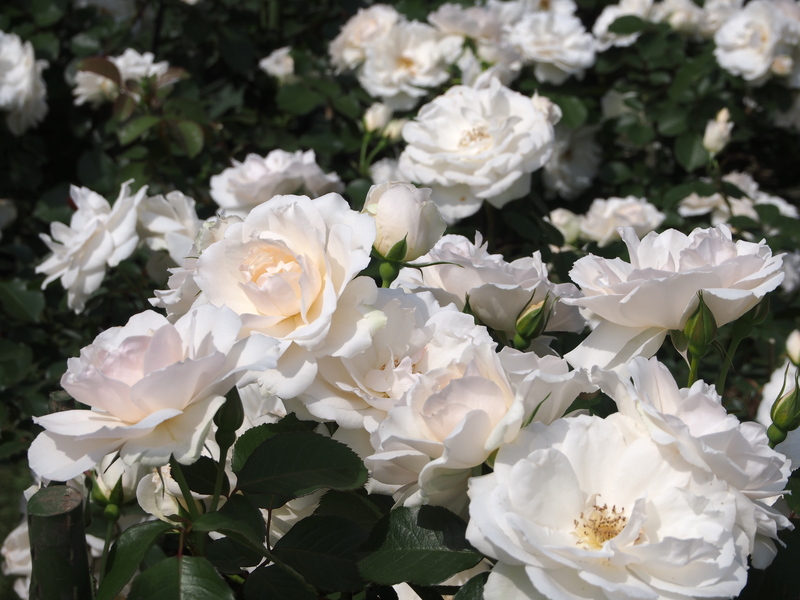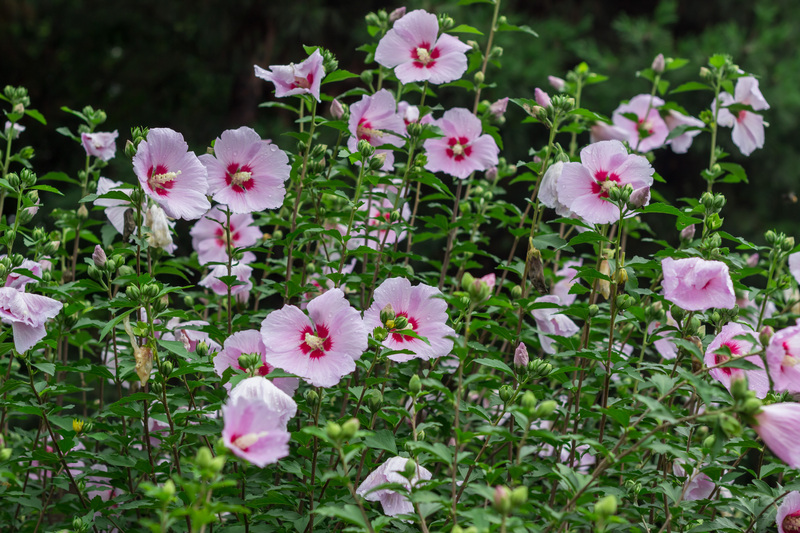Learn the Essentials of Container Gardening
Posted on 07/09/2025
Learn the Essentials of Container Gardening
Are you dreaming of a lush, vibrant garden but limited on space? Container gardening brings the joy of planting to balconies, patios, or even simple window sills. Learning the essentials of container gardening is the first step to transforming any small area into a green oasis. Whether you're a beginner or a seasoned gardener, this comprehensive guide will walk you through every crucial detail, ensuring a thriving container garden all year round.

What Is Container Gardening?
Container gardening is the art and practice of growing plants in pots, tubs, and other containers instead of planting them directly in the ground. This method offers flexibility, easy maintenance, and creative design, making it perfect for urban dwellers or anyone short on space.
- Adaptable: Suitable for indoor and outdoor spaces.
- Versatile: Grow flowers, vegetables, herbs, or succulents.
- Accessible: Ideal for people with mobility issues.
Why Choose Container Gardening?
Container gardening basics open a world of possibilities. Here are some key benefits:
- Space-saving: Perfect for balconies, rooftops, and apartment decks.
- Moveable Gardens: Easily relocate plants to optimize sunlight and protection.
- Minimal Weeding: Containers are less susceptible to groundwater weeds.
- Pest Control: Isolated pots reduce the risk of widespread infestations.
- Personalized Decor: Containers add aesthetic appeal with colors, textures, and shapes.
Choosing the Right Containers
Selecting containers is a critical step in container gardening. The right pot ensures healthy plant growth and easier maintenance. Consider these factors:
Material Matters
- Clay or Terracotta: Porous and natural-looking, but tend to dry out quickly. Ideal for drought-tolerant plants.
- Plastic: Lightweight, versatile, and retains moisture. Great for beginners.
- Ceramic: Glazed pots are attractive and retain moisture but can be heavy.
- Metal: Modern aesthetics, but heat up quickly and may need extra insulation to protect roots.
- Wood: Rustic look and excellent insulation. Make sure it's rot-resistant.
Size and Drainage
Always choose a container with adequate drainage holes. Proper drainage prevents root rot and ensures healthy plants. Bigger containers allow for healthier root systems and longer moisture retention, making maintenance easier.
- Tip: The deeper the pot, the better for root crops like carrots, potatoes, and tomatoes.
Selecting the Best Soil for Containers
Soil is the foundation of successful container gardening. Unlike garden beds, containers need soil that holds moisture but drains well.
Potting Mix vs. Garden Soil
Never use regular garden soil in pots. It compacts easily, hinders root growth, and can introduce pests or diseases.
- Potting Mix: Specially formulated, lightweight, and pre-sterilized.
- Soilless Mixes: Made from coconut coir, peat moss, perlite, and vermiculite, providing excellent aeration.
- Pro tip: Add slow-release fertilizer pellets or compost to your potting mix for long-lasting nutrition.
Picking the Perfect Plants for Container Gardens
You can grow almost anything in a container. However, some plants thrive better in pots than others. When selecting plants, consider:
- Sunlight Requirements: Match plants to your available light (full sun, partial shade, or full shade).
- Growth Habit: Some species, like tomatoes and peppers, need space and staking, while herbs and succulents stay compact.
- Companion Planting: Group plants with similar needs to maximize yield and health.
Top Choices for Container Gardening
- Herbs: Basil, parsley, thyme, mint, and rosemary.
- Vegetables: Tomatoes, peppers, lettuce, radishes, and cucumbers.
- Flowers: Petunias, geraniums, marigolds, and pansies.
- Fruit: Strawberries, blueberries, and dwarf citrus trees.
- Succulents and Cacti: Low-maintenance and visually striking plants.
Setting Up Your Container Garden
Proper setup is essential for thriving container gardens. Here's how to get started:
1. Choose Your Location
- Sun: Most vegetables and flowers require at least 6 hours of direct sunlight daily.
- Shade: Ferns, impatiens, and some herbs do well with less light.
- Shelter: Position pots to protect plants from strong winds or harsh weather.
2. Prepare Your Containers
- Clean pots thoroughly before use to remove pests or residues.
- Ensure every container has drainage holes at the bottom.
- Place gravel, broken pottery, or mesh over drainage holes to prevent soil loss.
3. Fill with Potting Mix
- Fill the container about three-quarters full with quality potting mix.
- Moisten the soil before planting for better root establishment.
- Add a layer of mulch on top to retain moisture and suppress weeds.
4. Plant and Arrange
- Spacing: Avoid overcrowding; follow the spacing instructions on seed packets or tags.
- Depth: Plant at the same level as nursery pots or slightly deeper for stability.
- Design: Mix trailing, upright, and filler plants for visual interest.
Caring for Your Container Garden
Success in container gardening relies on consistent care, including watering, feeding, pruning, and pest control.
Watering Techniques
- Frequency: Containers dry out faster than in-ground gardens. Water daily in hot weather, but avoid waterlogging.
- Method: Water at the base of plants, not on leaves, to prevent diseases.
- Self-watering pots: Perfect for busy gardeners who may forget regular watering.
Feeding and Fertilizing
- Fertilize regularly: Nutrients deplete quickly in containers. Use a balanced liquid fertilizer every two to four weeks.
- Compost: Add organic matter to boost soil fertility naturally.
- Watch for yellowing leaves--it can signal nutrient deficiencies.
Pruning and Deadheading
- Trim back leggy growth: Keeps plants compact and encourages new shoots.
- Remove spent flowers (deadheading): Boosts continuous blooming.
- Tidy foliage: Prune away damaged or diseased leaves promptly.
Pest and Disease Management
- Inspect plants regularly: Look for aphids, mites, or fungal issues.
- Use organic solutions: Neem oil and insecticidal soap are effective and safe.
- Separate sick plants: Isolate to prevent spreading diseases.
Design Tips for Beautiful Container Gardens
Make your container gardening stand out with creative flair:
Thriller, Filler, Spiller Formula
*Thriller* refers to a tall, eye-catching plant; *filler* adds bulk and color; *spiller* cascades over the edges. Combine these with contrasting textures and colors for maximum visual impact.
- Thriller: Upright grass, canna lilies, or dwarf sunflowers.
- Filler: Geraniums, begonias, or lettuce.
- Spiller: Creeping Jenny, trailing petunias, or sweet potato vine.
Arranging Containers
- Group containers of different sizes and heights for depth.
- Place larger pots at the back and smaller, lower-growing ones in front.
- Use matching or contrasting pots to complement decor.
Seasonal Container Gardening Tips
Learning the basics of seasonal container gardening is crucial for long-lasting displays.
Spring and Summer
- Refresh potting mix before planting new varieties.
- Rotate sun-loving and shade-loving plants as the sun shifts position.
- Keep an eye on water as temperatures rise; check moisture daily.
Autumn and Winter
- Try cold-hardy pansies, ornamental cabbage, and evergreens.
- Move tender plants indoors or insulate pots with bubble wrap or burlap.
- Reduce watering, as plants go dormant and soil holds moisture longer.
Common Challenges in Container Gardening
No garden is without its struggles. Here are a few common container gardening issues and tips for overcoming them:
- Wilting or scorched leaves: Usually a sign of under-watering, over-watering, or too much direct sun.
- Root-bound plants: Roots visible through drainage holes mean it's time to repot.
- Algae or mold: Appear when soil stays too wet or there's poor airflow. Allow topsoil to dry out between waterings.
- Poor blooming or yield: Usually due to insufficient light, lack of fertilizer, or incorrect plant choice.
Getting Kids Involved in Container Gardening
Introduce children to the wonders of nature with container gardening essentials:
- Start with easy, fast-growing seeds like radishes or sunflowers.
- Let them paint pots and arrange mini gardens for a creative project.
- Teach responsibility through regular watering and maintenance.

FAQs: Essential Questions About Container Gardening
- How often should I water my containers?
- It depends on plant type, weather, and pot size. In hot weather, daily watering might be necessary.
- Can I use any container for planting?
- Yes, but ensure it has drainage holes and is made from non-toxic materials.
- What are the best vegetables for container gardening?
- Tomatoes, lettuce, peppers, radishes, and herbs like parsley and mint.
- Do I need to fertilize my container garden?
- Yes, since nutrients leach out of pots quicker. Use slow-release or liquid fertilizer regularly.
Conclusion: Start Your Container Garden Today!
Learning the essentials of container gardening enables you to grow beautiful, healthy plants regardless of space limitations. With the right containers, soil, plant choices, and care, you can cultivate flowers, vegetables, herbs, and even small fruit trees anywhere. Embrace the versatility and creativity of container gardening, and enjoy fresh flavors, vivid blooms, and a greener world--one pot at a time!
Get started now, and transform your home or patio into a flourishing container garden!



